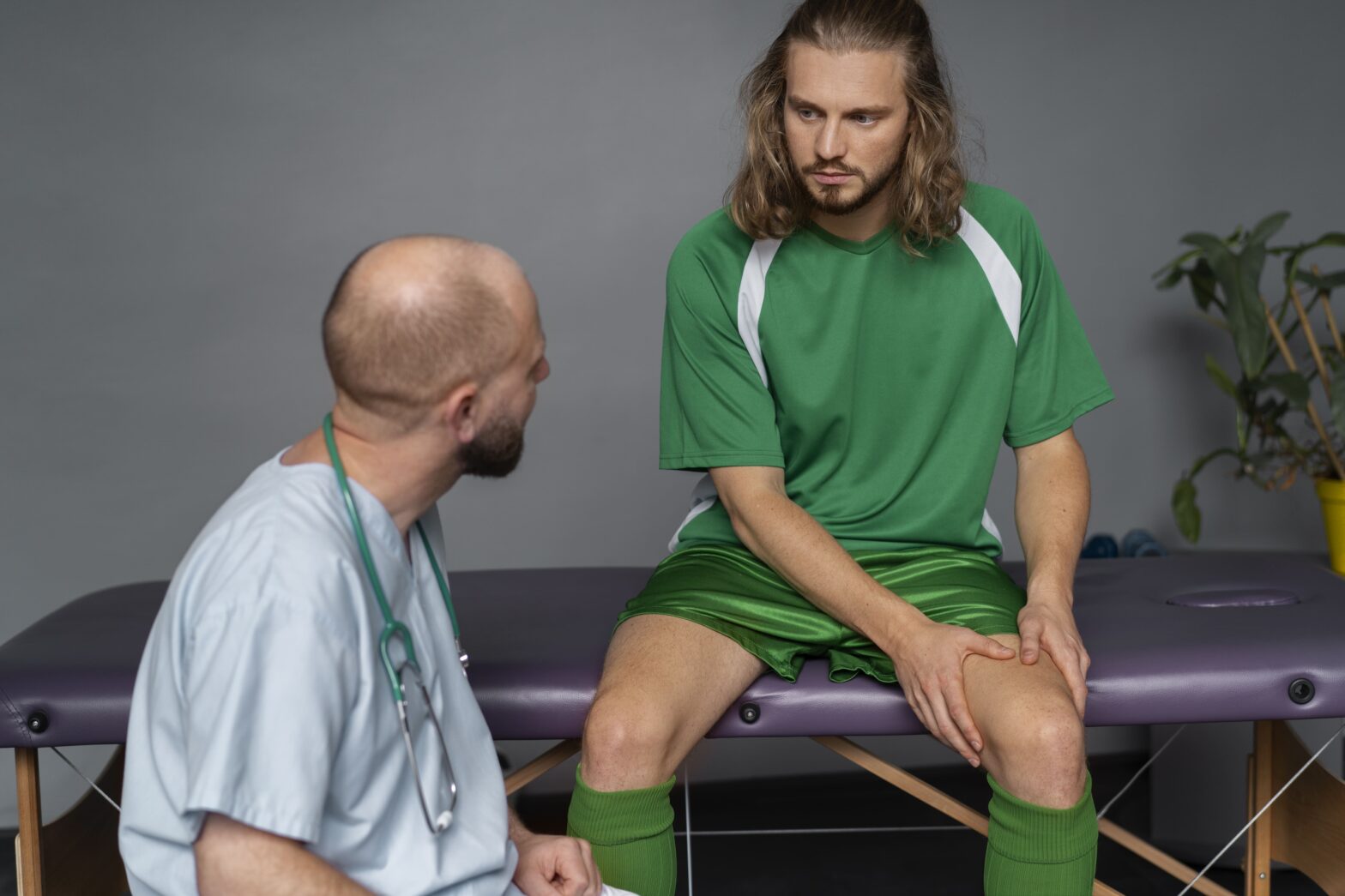Do you have a surgery approaching? Are you nervous about the outcomes? At MEX Physio, we understand that this can be a nerve wracking time.
Know that support can be found at our physiotherapy clinic. Choosing to participate in physiotherapy both before and after surgery has enormous benefits. Are you interested in recovering faster and having better operation outcomes? If so, contact MEX Physio to schedule an appointment today!
Healing from total joint replacements
The joints of the body can move in some impressive directions and even (in the case of the hips and knees) hold your body weight steady as you stand and move.
Unfortunately, their complexity also opens the door for many potential forms of injury and damage. Joint damage can take the form of torn muscles, ruptured ligaments, and even dislocations.
Chronic joint damage may develop over many years, resulting in worn cartilage, inflamed or deformed joint components, and painful bone-on-bone friction within the joint. For instance, you may suffer from knee, shoulder, or hip arthritis that makes everyday activities impossible.
If your damaged joint doesn’t respond to medication, exercise, and lifestyle changes, you may need to resort to surgery. Two primary types of orthopedic (joint) surgery include:
- Reconstructive surgery – Many injuries require reconstructive joint surgery. Examples include a torn rotator cuff in the shoulder and ruptured ligaments in the knee.
- Total joint replacements – Total joint replacements may be necessary when the original joint has received so much wear and tear that nothing more can be done to treat it. This need often applies to weight-bearing joints that have been subjected to longstanding or abnormal stress.
How physiotherapy can help you get moving again
As tempting as it might be to stay in bed following your joint surgery, you need to start working on your rehabilitation as soon as you can.
Research shows that patients who undergo physiotherapy were better at balancing, getting out of chairs, climbing stairs, and walking than patients who just received standard postoperative care. Your personalized physiotherapy plan may consist of:
- Range of motion exercises – Exercises to restore your range of motion are critically important, not only for helping your new joint enjoy optimal function but also for helping to prevent adhesions.
- Strength and balance training – Our physiotherapy center can prescribe strength training to help you rebuild damaged or atrophied muscles. Neuromuscular re-education exercises can help you regain weight-bearing joint stability.
- Massage therapy – Massage therapy boosts blood flow and drainage in tissues following surgery. It can also keep the tissue loose and limber while reducing scar tissue formation.
- Heat and cold treatments – Applications of heat or cold can control post-operative swelling, ease inflammation, and relieve pain.
- Training on assistive devices – Over the course of your recuperation, you may have to depend on assistive devices such as crutches or canes. Your physiotherapy regimen can include training on how to use these devices safely and efficiently.
Your physiotherapist will use their expert knowledge to determine what your treatment plan will look like and take into account factors such as your age, source of injury, and current fitness level.
The important of preventative rehabilitation or “prehab”
Did you know that physiotherapy before a surgery is essential too?
Working with a physiotherapist before surgery can help you prepare for the changes you’ll have to adjust to after your operation. For example, your therapist can prepare you for driving, moving around your house, your eventual return to work, and a post-operative exercise plan that won’t jeopardize your recovery.
Your therapist can also recommend assistive devices, such as a cane or walker, that you may require after surgery.
Prehab with a physiotherapist may include recommendations for establishing a “recovery zone” in your home. If your bedroom is on the second floor of your home, for example, you might want to set up a bedroom or resting area on the first floor to avoid having to use the stairs frequently after surgery.
Items in the kitchen that you may need to reach should be placed on lower shelves ahead of time, where they are easily accessible. Physiotherapy will be invaluable to your recovery, but therapeutic rest will also be beneficial. Prepare a space in your home where you can comfortably sit, rest, and relax.
Exercise will also be a part of your pre-surgery physiotherapy plan. Strength training, stretching for flexibility, and aerobic exercise to improve oxygen flow will all aid in your recovery from surgery. Prehab has been proven to improve surgical outcomes and shorten recovery times.
Trust MEX Physio with your recovery!
At our physiotherapy clinic, there is nothing more important to us than the health and wellness of our patients. If you’re having hip, knee, or shoulder surgery, contact us today to get started on your recovery plan!
Tags: knee pain, physiotherapists, Hip and Knee Pain, knee pain relief, post surgical rehab, post surgery issues, Physiotherapy, hip pain



